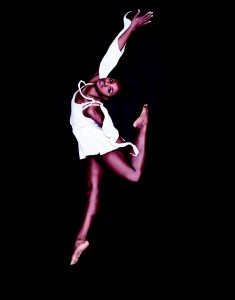
Four world-renowned choreographers from diverse dance and cultural backgrounds brought a mix of comedy, love, angst, and soul to NYU's Skirball Center For The Performing Arts on Friday, January 10, 2014.

The evening began with "The Very Unlikeliness (I'm going to KILL you!)" by Chris Yon. The two dancers in the piece, Yon and Taryn Griggs, are a real-life couple who have been on the road performing this 45-minute, husband-and-wife performance piece. The opening of the work started off soulful and brassy, with abrasive and spontaneous movements to The O'Jays "Give The People What They Want"; yet by the second song (by Karinne Keithley Syers), it became clear that the piece is more heavily inspired by the vaudeville narratives that were popular at the turn of the 19th century than anything: it includes droll humor and slapstick comedy, like head shaking, throat grabbing, wrist tossing, and finger tapping. At times, the repetitive and abstracted nature of the piece seemed to drag on, but overall, the piece is an interesting and entertaining work.
"Like Lazarus Did" by the Stephen Petronio Company was next on the program; it has been performed in 26 countries throughout the world, including 35 New York City engagements. The performance displayed contemporary dance accompanied by the sounds of Eastern and religious music. At the beginning of the piece, the performers' movements were strategic and defined: they propped their legs above their heads, pointed them in the shape of a four, and swirled like whirling dervishes. As the performance continued, they eased their dark, antagonizing movements into the light of resurrection and new beginnings, such as falling on the ground and rising slowly, as if one ligament at a time. Later in the performance, a few female dancers entered the stage in blue sheer tops moving like warriors, their limbs slow and steady. It ended with a shocking image as the curtains closed: a girl in bondage breaking free.

Rosie Herrera, a Cuban choreographer raised in Florida, presented her piece "Dining Alone", an honest exploration of aging and isolation. Herrera mimics what she saw growing up in her father's restaurant amongst diners; some people were happy, some confused, and many came in alone. This, it seems, is an investigation of loneliness and relationships: during the opening, some dancers lay plates on the floor while another dancer walked over them as if they were steppingstones, a guide for her life. The atmosphere on the stage felt like a topsy-turvy Disneyland. Dancers smashed their faces in cream (later licked off by Octavio Campos) and acted out an except from "Snow White"; the music ranged from Rachmanioff to tunes from Billy Wilder's film "The Seven Year Itch". Introspective and bizarre, "Dining Alone" is melancholic and moving; it represents so much more than just an empty plate.
Last but not least was Camille A. Brown's vibrant "New Second Line". The piece had a feeling of celebratory grief: the performers gave condolences, danced to broken beats and cymbals. They swayed their hips, hopped into handstands, flipped into body jolts, and turned up the volume on New Orleans jazz funk. Using a mix of modern dance, African dance, and ballet, they did an excellent job capturing the spirit of New Orleans, LA -- finishing the performance on a high note.